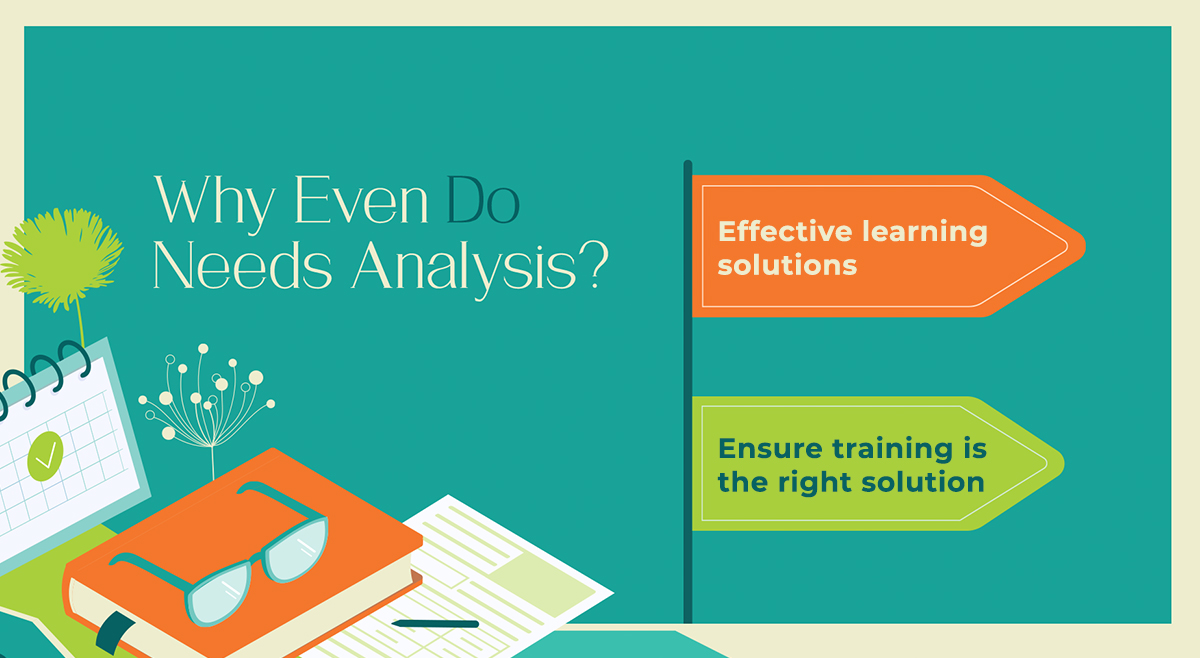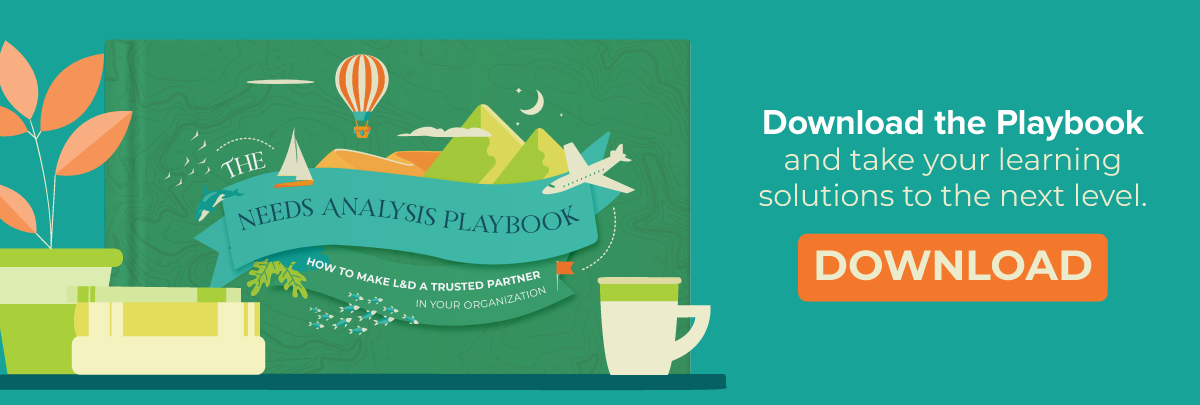Conducting a needs analysis is a critical step in the learning experience design process, yet it is often overlooked—or skipped over entirely. This is most likely due to a common misconception about it being a time-consuming, expensive, or overly complex undertaking.
But designing and implementing a learning experience solution without first doing a needs analysis is a huge risk. After all, if you don’t know what the underlying problem or need is, how can you be sure that what you’re creating will solve it?
It would be like a doctor prescribing treatment without having a clear understanding of who the patient is and what the symptoms are—not to mention details about the patient’s medical history, allergies, or other critical risk factors. Not only is it unlikely that the patient will get better, there’s also a pretty big chance that the doctor may end up doing more harm than good.
In this blog post series, I’ll help demystify the needs analysis process and demonstrate its value by examining why we do it as well as two different ways to approach it.
Let’s begin where all good needs analysis begins—with the why.
Why do a needs analysis?

Like a doctor performing a series of diagnostic tests, we carry out a needs analysis to uncover what the underlying problem is, whom it affects, what impact it’s having on the individual—or, in L&D’s case, what impact it’s having on the individual, the team, and the business—and what the desired outcome, aka “success,” looks like.
We then use our findings to design effective learning solutions but perhaps more importantly, to determine if training is the right and only solution.
So, what do I mean by this?
Let’s think about why we train people in the first place. We train to improve their knowledge, skills, and performance. We identify the gaps and fill them in. And when we get it right—when we develop effective training solutions—we should see performance improve, which, in turn, should impact business results.
But there are lots of things that can affect performance—many of which can fall outside the scope of training. These can include internal factors such as the learners’ mindsets, attitudes, and beliefs as well as external factors, such as an organization’s systems and tools, procedures and policies, culture, and even people.
To revisit our doctor/patient analogy for a moment, there may be instances when medication alone may not be enough to ensure a full and successful recovery. There may be other factors impacting the patient’s health condition or ability to heal such as their lifestyle, diet, stress levels, exercise routine, or sleep habits.
In fact, even the word “recovery” (success) might mean different things to different people. For some, it might mean regaining basic mobility after breaking a leg and being able to walk or drive again, whereas for others it might mean being able to compete in the Olympic Games.
The doctor needs to take everything into consideration in order to devise and prescribe the most effective treatment plan. And the same is true for learning.
So we do a needs analysis to find out what the problem is, whom it affects, what or who might be contributing to the performance problem, and what success looks like on individual and business levels. Once we have this information, we can determine whether training is the right and only solution before going on to design and develop an effective program.
At SweetRush, we’ve devised a whole new needs analysis experience that sits at the intersection of learning experience design and design thinking. To find out more about our groundbreaking CoDesign service and whether it’s a good fit for you, get in touch and we’ll be happy to help.
Now we know the “why.” Let’s take a look at the “how.”
If you’re interested in finding out more about strategic-level needs analysis and how it can help ready the workforce to meet future performance needs, go to part 2.
If you want to explore project-level needs analysis, what it entails—hint: it’s super easy!—and why you should include this level of analysis on every single training project, go to part 3.
If you’d like a deeper dive into why we do a needs analysis and how to conduct a project-level analysis, download our definitive guide, The Needs Analysis Playbook.





